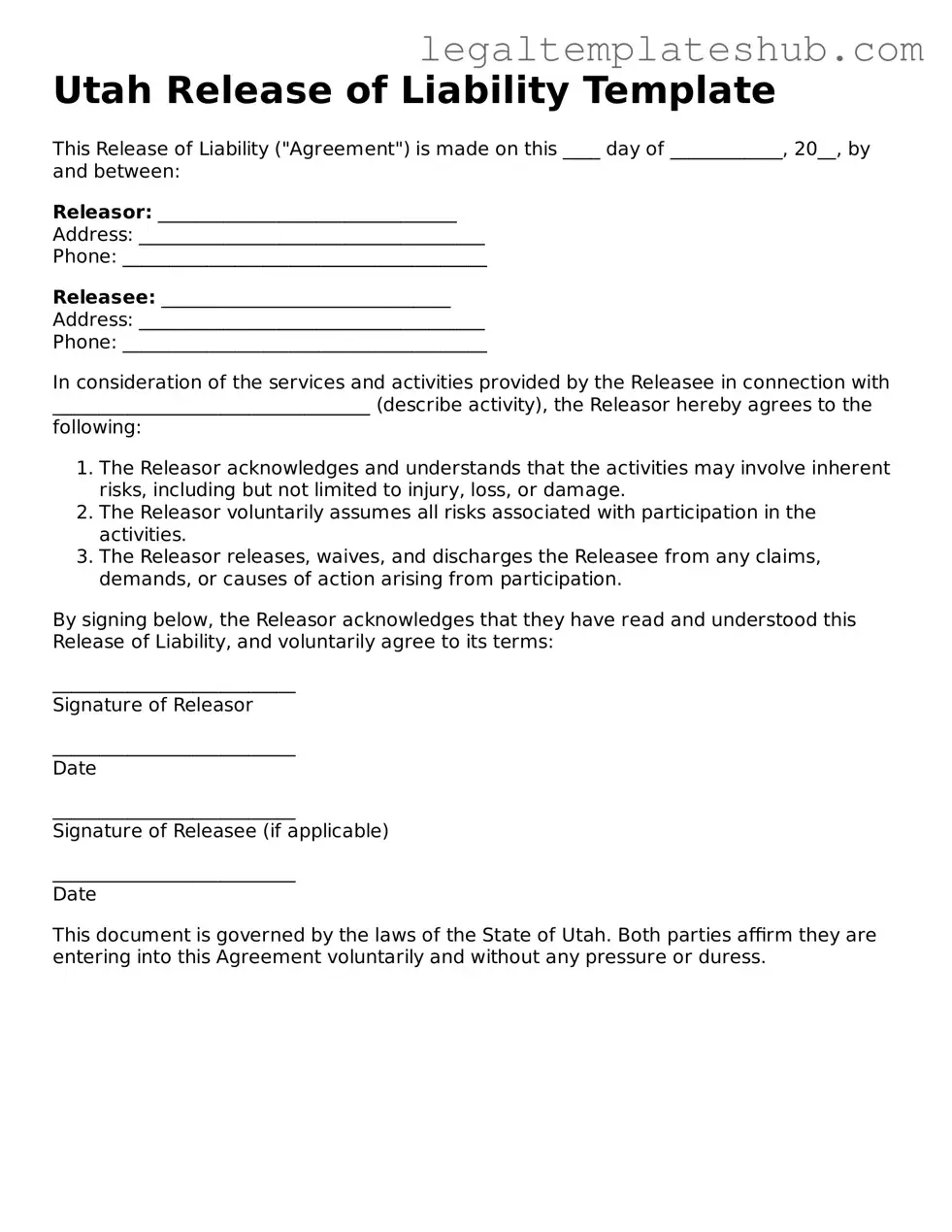- Misconception 1: A Release of Liability form eliminates all legal responsibility.
This is not true. While a Release of Liability can protect against certain claims, it does not absolve a party from all liability, especially in cases of gross negligence or intentional misconduct.
- Misconception 2: Signing a Release of Liability means you cannot sue under any circumstances.
In reality, a signed release can limit your ability to sue, but it does not completely remove your right to take legal action, particularly if the agreement is deemed unenforceable.
- Misconception 3: All Release of Liability forms are the same.
Forms can vary significantly based on the activity, the parties involved, and state laws. Each form should be tailored to specific situations.
- Misconception 4: Minors can legally sign a Release of Liability.
In most cases, minors cannot enter into binding contracts. Therefore, a parent or guardian must typically sign on their behalf.
- Misconception 5: A verbal agreement is just as effective as a written Release of Liability.
Written agreements provide clear evidence of the terms and conditions agreed upon. Verbal agreements can lead to misunderstandings and are harder to enforce.
- Misconception 6: A Release of Liability is only necessary for high-risk activities.
While it is more common in high-risk situations, even low-risk activities can benefit from a Release of Liability to clarify expectations and responsibilities.
- Misconception 7: A Release of Liability can be enforced regardless of the circumstances.
Courts may refuse to enforce a release if it is found to be unconscionable or if the language is ambiguous. Clarity and fairness are key.
- Misconception 8: Once signed, a Release of Liability cannot be revoked.
In some cases, individuals may have the ability to revoke their consent, particularly if they have not yet engaged in the activity covered by the release.
- Misconception 9: A Release of Liability protects against all types of claims.
This form typically protects against claims for negligence, but it may not shield a party from claims related to fraud, willful misconduct, or statutory violations.
- Misconception 10: You don’t need to read a Release of Liability before signing.
Reading and understanding the terms is crucial. Signing without comprehension can lead to unintended consequences and loss of rights.
